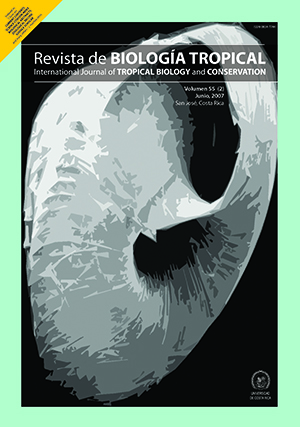Abstract
The current work shows two molecular phylogenetic analyses on Neotropical deers. In the first analysis, the mitochondrial control region (D-loop) was sequenced in six Odocoileinae species from Latin America, using the sequences of two Muntiacinae as outgroups. The results obtained were as follows: A sequence of Mazama americana showed a striking relationship with several sequences of Odocoileus in contrast to that expected, since this M. americana haplotype, from a Mexican origin, was not associated with several Bolivian Mazama sequences analyzed. This could put forward that this genera is not monophyletic. On the other hand, these Bolivian Mazama formed a clade with Pudu puda and Ozotoceros bezoarticus. Likely, an Odocoileus virginianus sequence from the Central area of Colombia showed a more strong relationship with a Northamerican O. heminonus sequence than with the other O. virginianus sequences of Colombian origin as well. This could be explained by means of various different hypotheses. The first is the existence of common ancestral haplotypes between both species. Another one is the reiterative hybridization among both Odocoileus species before the migration of O. virginianus from North America to South America. Moreover, the maximum parsimony analysis showed an intense relationship between the Muntiacinae and this Neotropical Cervidae clade. In addition, and adding credence to the relevant polyphyletism found in Mazama by means of the mitochondrial control region DNA sequences, a second analysis with 16 DNA microsatellite loci also showed a higher genetic relationship between M. americana and O. virginianus, than between the first species regard to Mazama gouazoubira.
Comments

This work is licensed under a Creative Commons Attribution 4.0 International License.
Copyright (c) 2009 Revista de Biología Tropical






